Master's Analysis: Finding Structure and Gesture in Raphael and Holbein
The masters used the same concepts you're learning. Let's prove it by analyzing Raphael and Holbein sketches to reveal the tubes, eggs, boxes, and curves underneath their masterful drawings.

The masters used the same concepts you're learning in this figure drawing course. Let's prove it.
This lesson is part of the Figure Drawing Course - a complete free course teaching you to draw the human body from scratch.
Watch the full lesson: hit play and learn how Master's used structure and gesture in their figure drawings.
Look for What's Underneath
Finished drawings hide the construction. Sketches REVEAL it.
When studying masters, hunt for unfinished work. The rough sketches, the working-out-ideas drawings - that's where you see the real process.
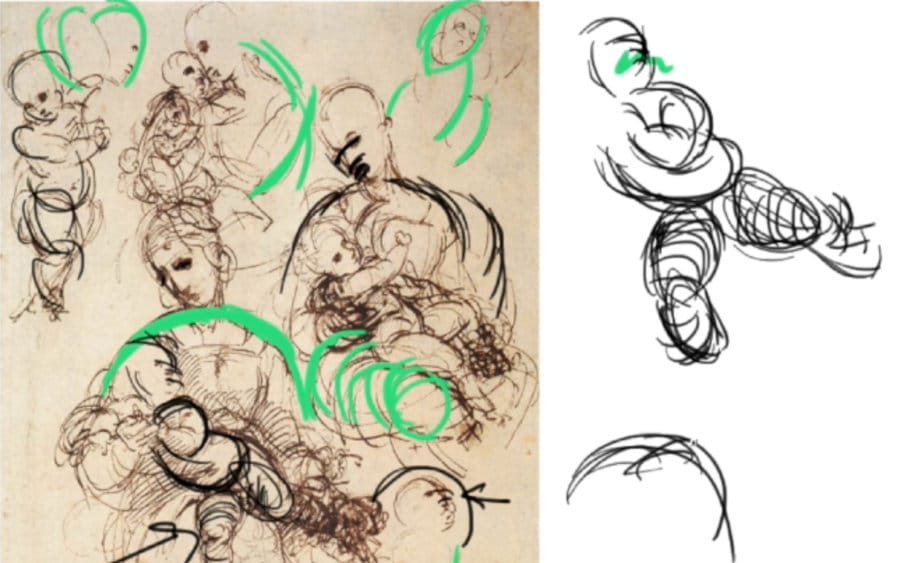
Raphael: All Curves and Eggs
Look at Raphael's baby sketches. Pure flowing curves.
What you'll see:
- Egg shapes for upper leg, lower leg, torso
- Lines wrapping around form (movement OVER, not around)
- Curves connecting everything
- Center lines moving through head, torso
- Features following curved construction lines
The baby's leg moving away? Egg shape elongated. Coming toward you? Rounder egg. Circle wrapping around the arm showing volume and direction.
Everything flows. Water-like curves through hair, limbs, body.
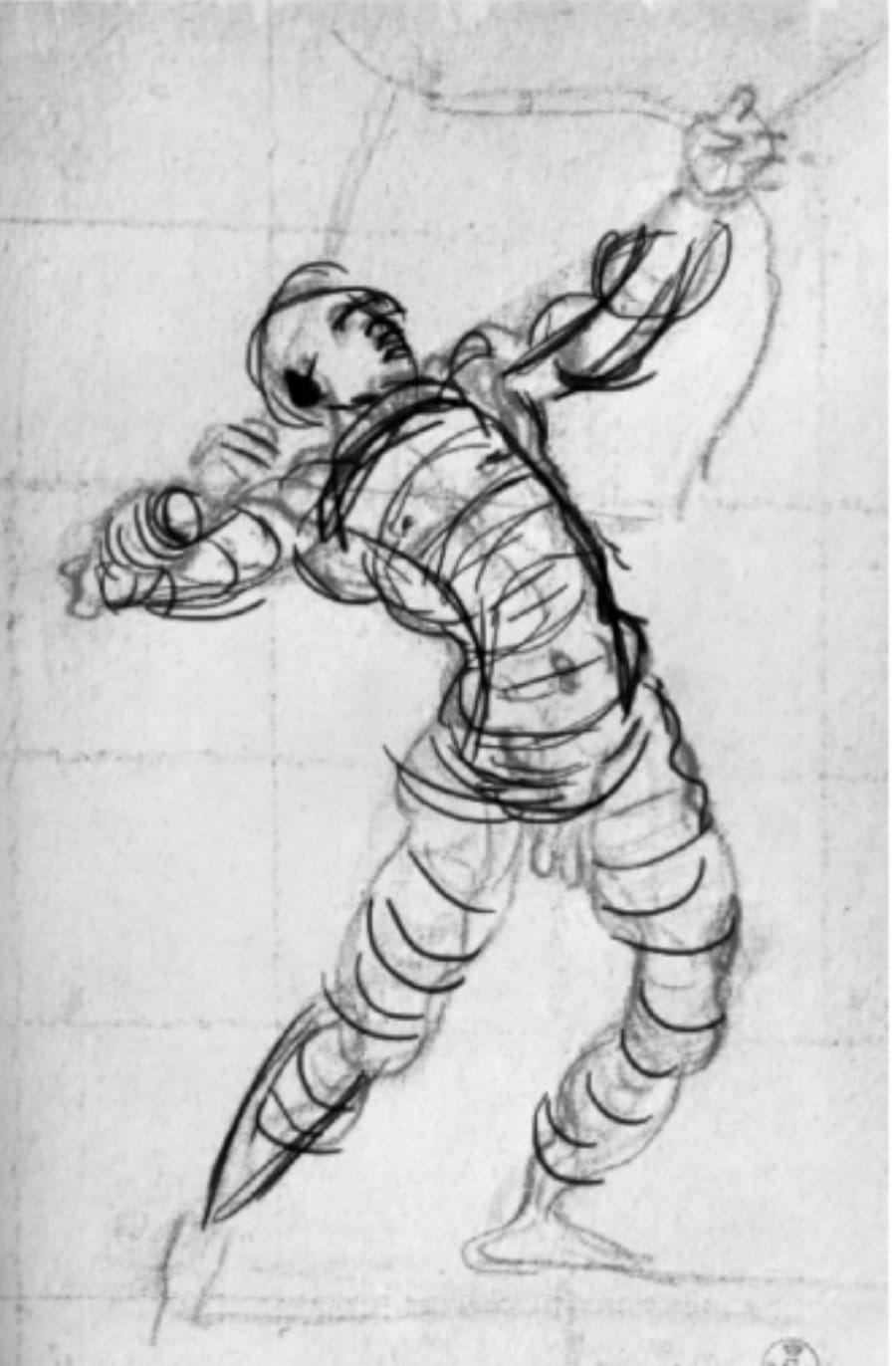
Holbein: Bumpy Outside, Curved Inside
Holbein's style is more muscular, bumpier on the surface. But look deeper.
The underlying construction:
- Tubes bending through torso
- Curved center lines even when muscles bulge
- Construction lines wrapping around forms
- Box construction for heads
- That bumpy detail? Laid OVER curved gesture lines
Those raw marks at the bottom of sketches show curved initial thoughts. Then muscles overlay that structure.
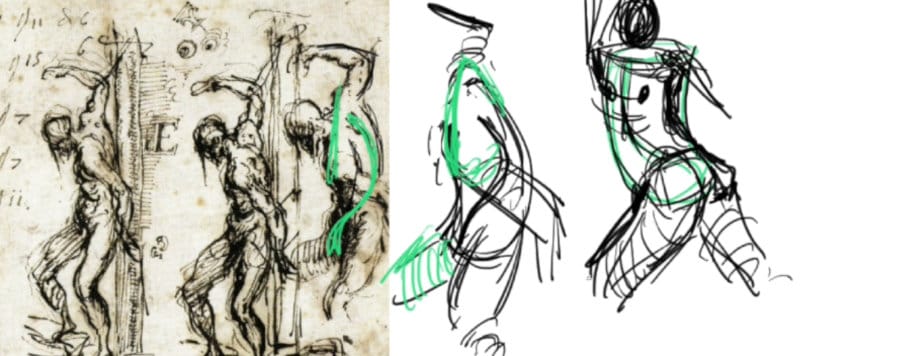
The S-Curve Twist Trick
Body twisting? Use an S-curve for the center line.
Shoulders rotating one way, hips the other? Draw the curved axis. That S-curve captures the entire twist.
Add the shoulder girdle on top, place the limbs - done. The twist is locked in with one curved line.
Simple trick, massive impact.
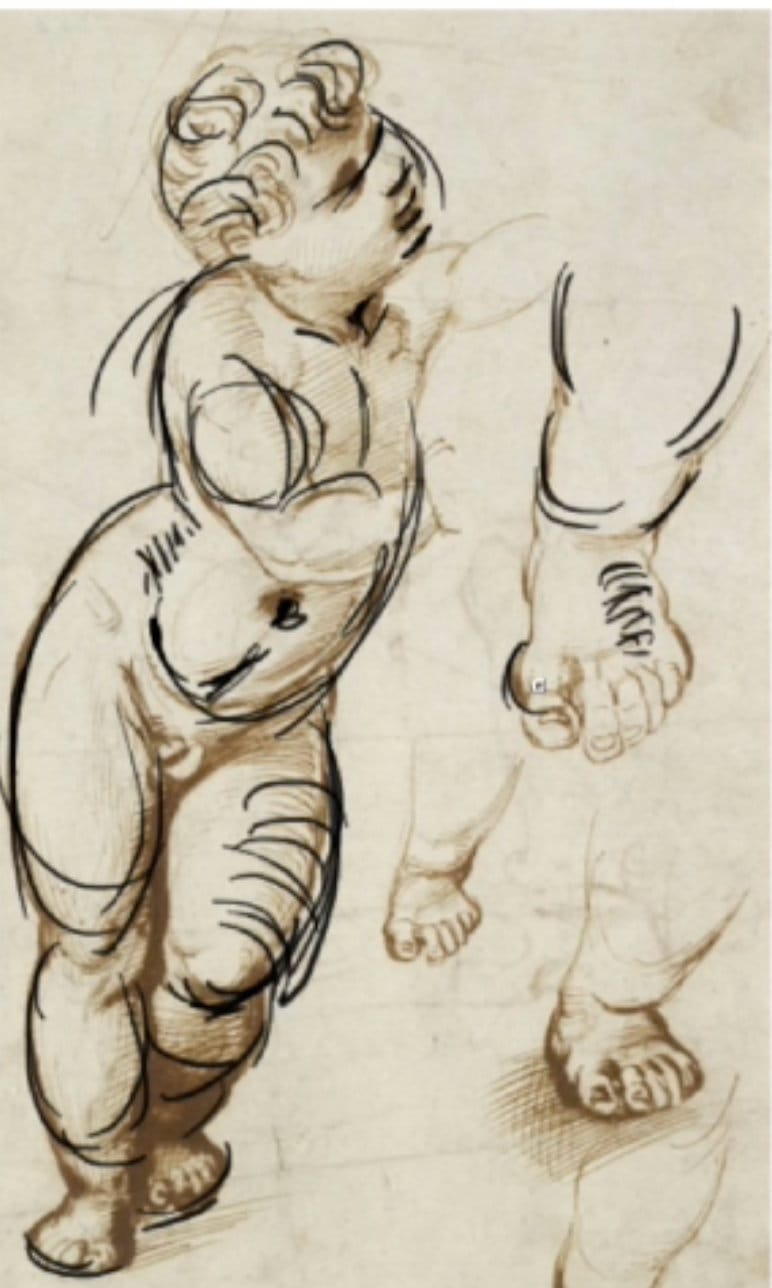
Movement Around Volume
Watch how construction lines wrap around forms in master drawings.
The head looking down? Curved lines for eye sockets, nose, mouth - all following the volume. Not flat placement - wrapping around the 3D form.
Leg bending away from you? Lines move diagonally supporting that direction. Bent toward you? Lines show that movement.
Shading supports it. Everything reinforces the volume.
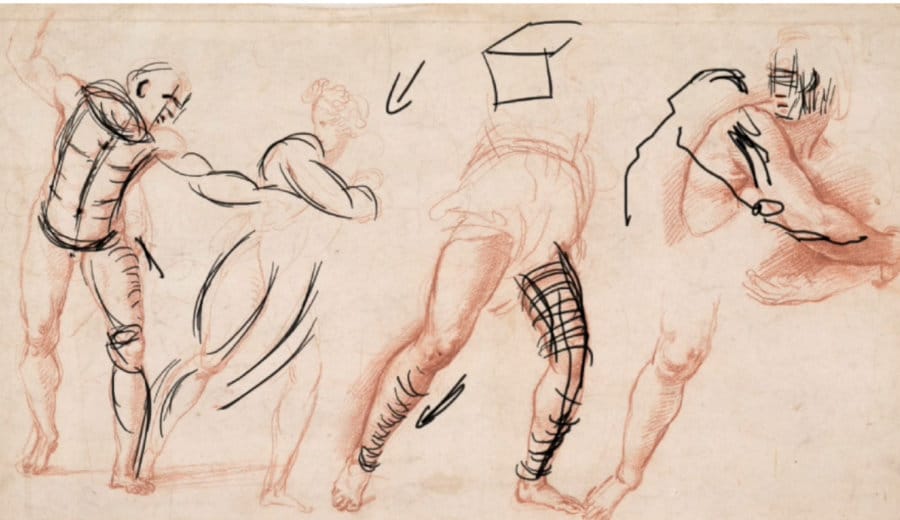
Box Construction for Heads
See those box shapes in head drawings?
Cheeks at widest point. Front plane vs side plane. Ear placement way back. That's box construction thinking even in flowing, organic drawings.
Masters simplified first, refined later.
Don't Just Copy Contours
Here's the trap: you see a beautiful finished drawing and copy the outside edge.
You learn nothing.
Look for the eggs underneath. The tubes. The curved gesture lines. The construction. THAT's what you study.
Copy the thinking, not the result.
What Masters Teach Us
Tubes, eggs, boxes, curves, corners - all the simple shapes we've been learning? Masters used them all.
The difference? They learned to hide the construction so well you don't see it in finished work. But in sketches? It's all there.
Study unfinished master drawings. See the simple shapes. Understand the process.
Then practice that process yourself.
Course Navigation
Part of: Figure Drawing Course > Module 1: Foundation
← Previous Lesson: Longest Sustained Curve
Next Lesson → Drawing Tips to Keep in Mind
Continue Learning
If you enjoyed this hand drawing course, explore even more lessons on our Free Drawing Tutorials & Courses Hub — including the complete How to Draw – Beginner’s Course.
Want new tutorials delivered to your inbox? Subscribe here and get free lessons, tips, and inspiration sent directly to you.




